Optimizing Product Mix and Profitability at O'Neill Enterprises
VerifiedAdded on 2023/05/29
|8
|960
|207
Homework Assignment
AI Summary
This assignment provides a detailed solution to a product mix optimization problem for O'Neill Enterprises. It begins by determining the best product mix and profit using the traditional method, ranking products based on margin. Then, it applies the constraint method, identifying bottleneck factors and calculating profit margin per minute to optimize resource allocation. The solution compares the results of both methods, concluding that the constraint method maximizes profit more effectively. Additionally, the assignment includes a precedence diagram, cycle time calculation, and theoretical minimum number of stations, along with task assignments and idle time analysis for a production line scenario. This comprehensive analysis demonstrates how to strategically allocate resources and optimize production processes for enhanced profitability. Desklib provides access to similar solved assignments and resources for students seeking assistance with their studies.
1 out of 8
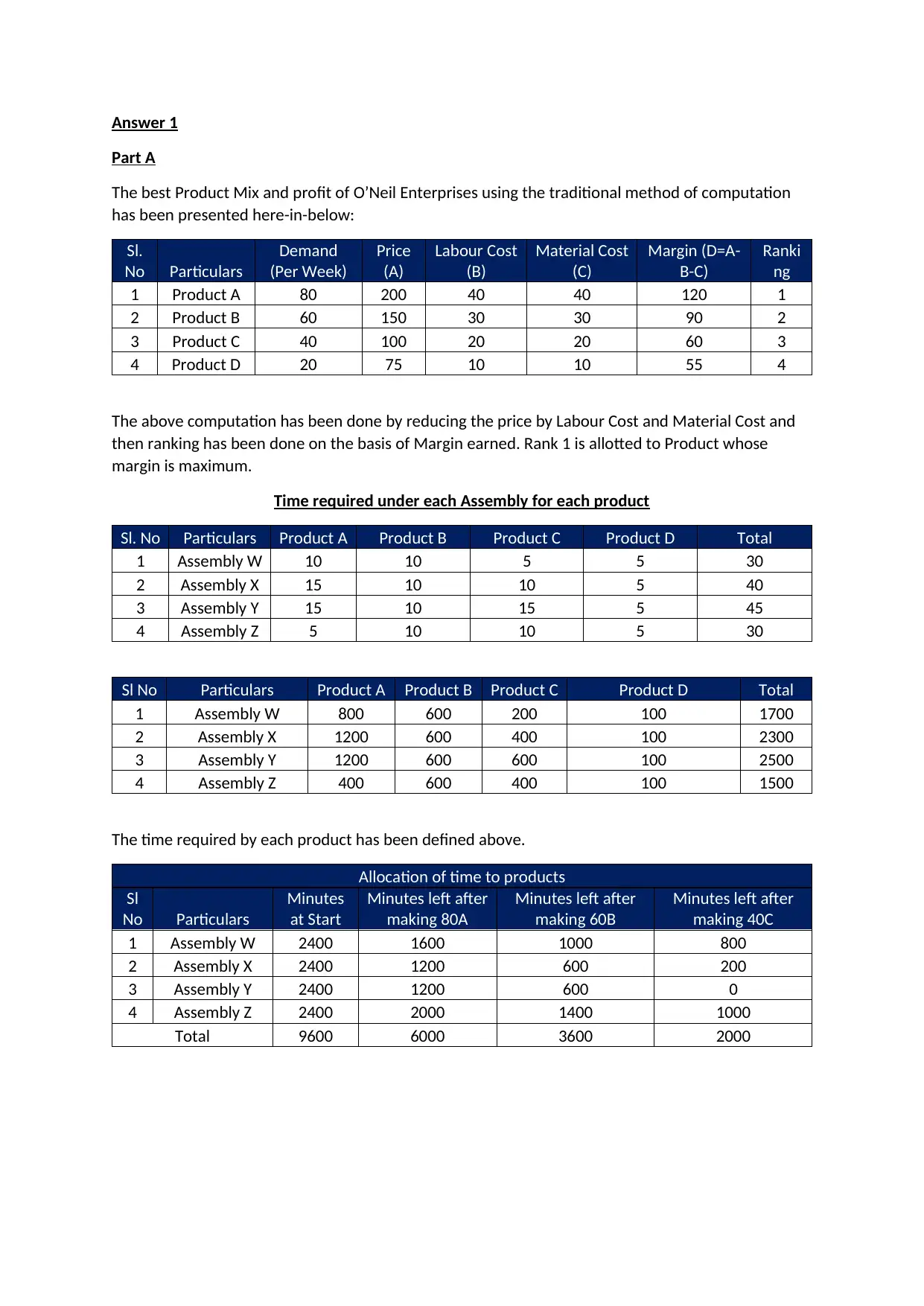
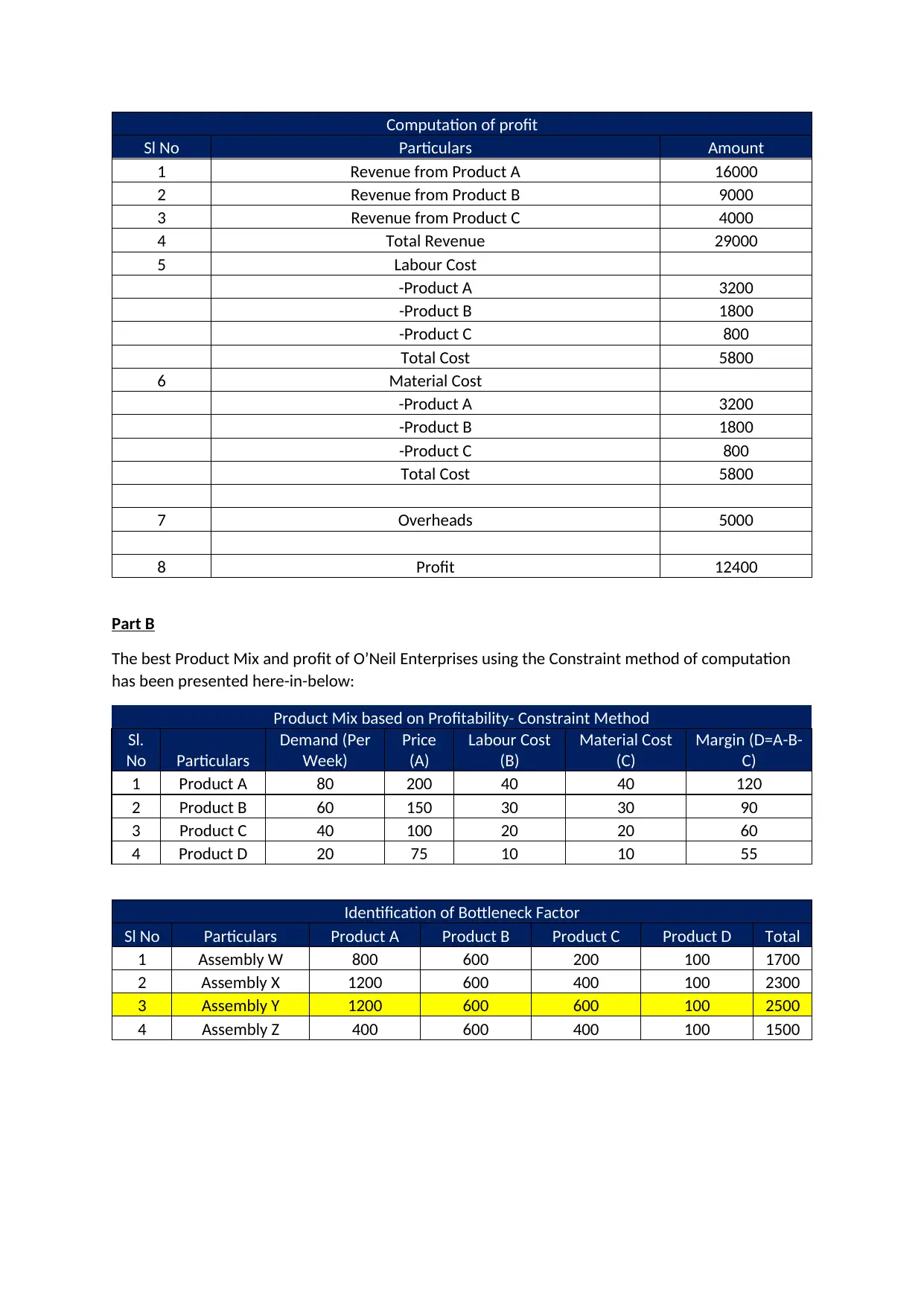
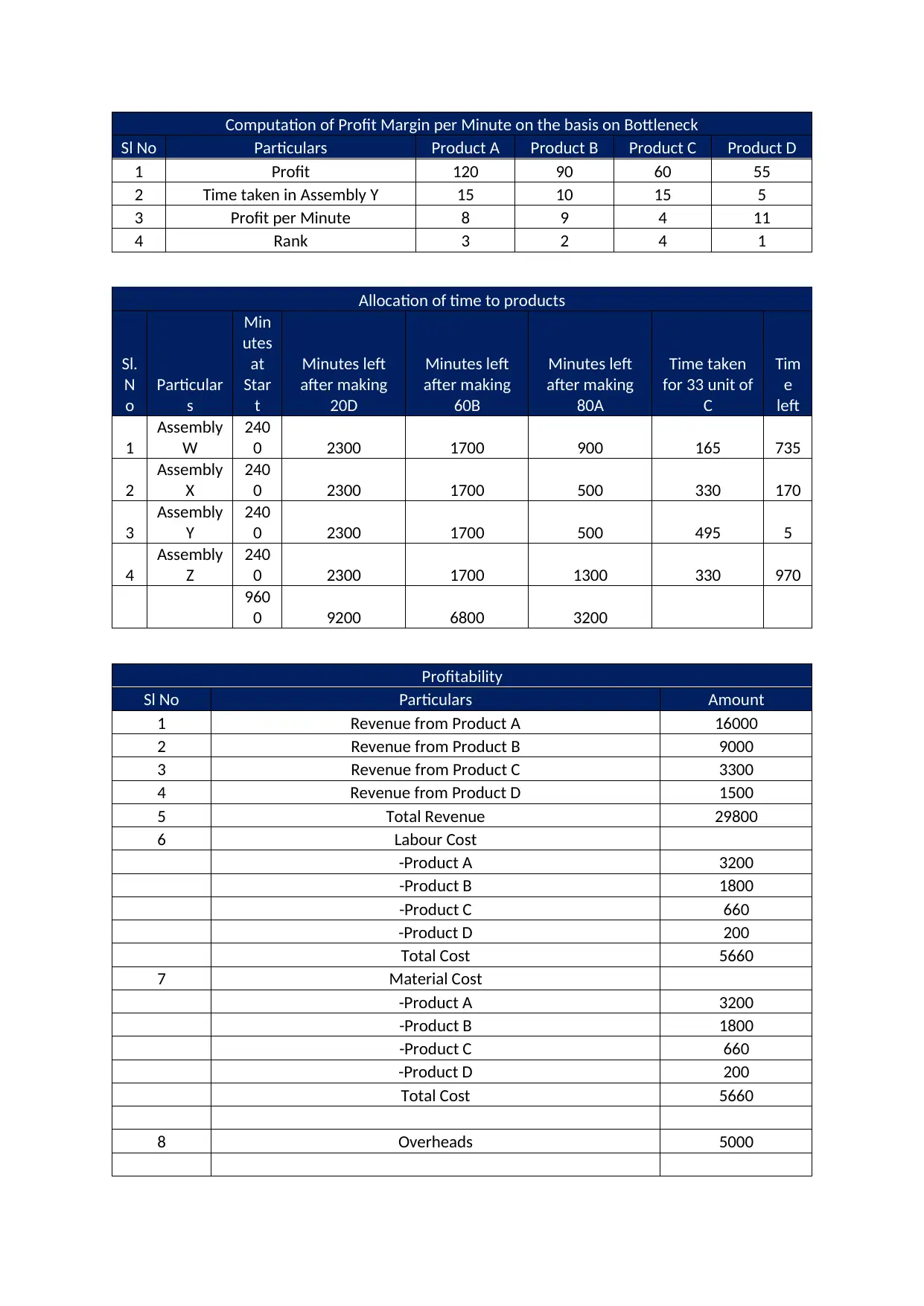

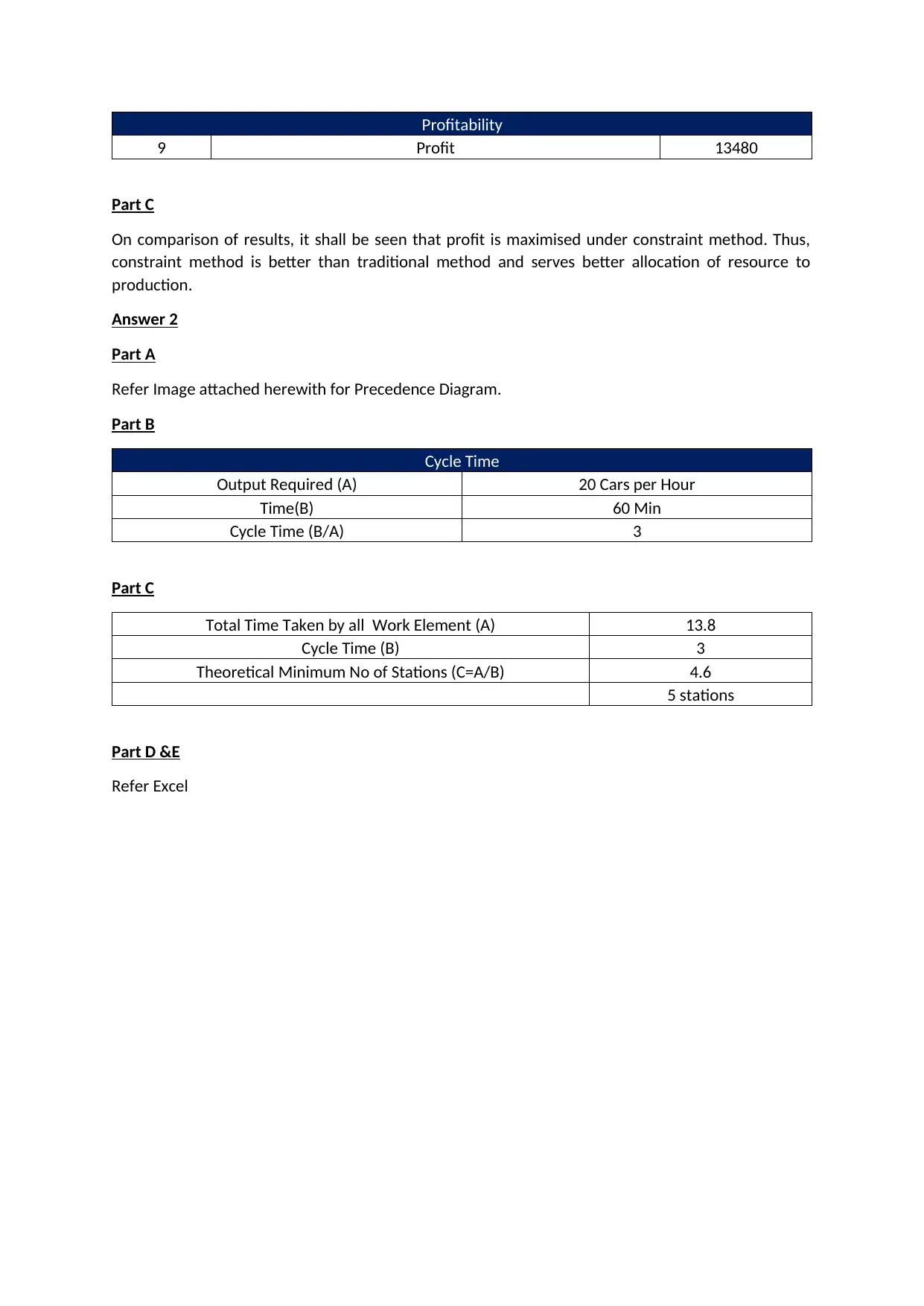


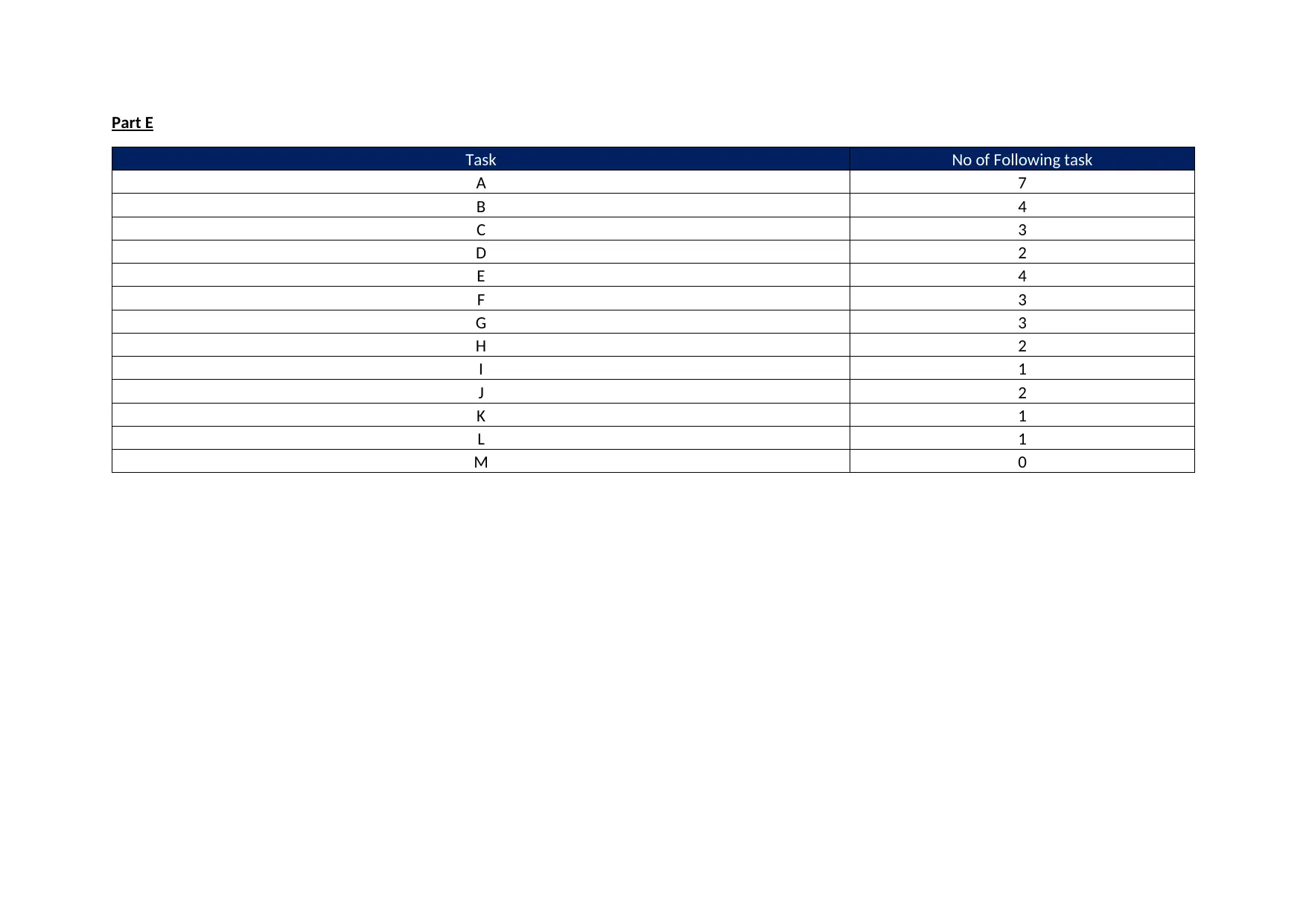
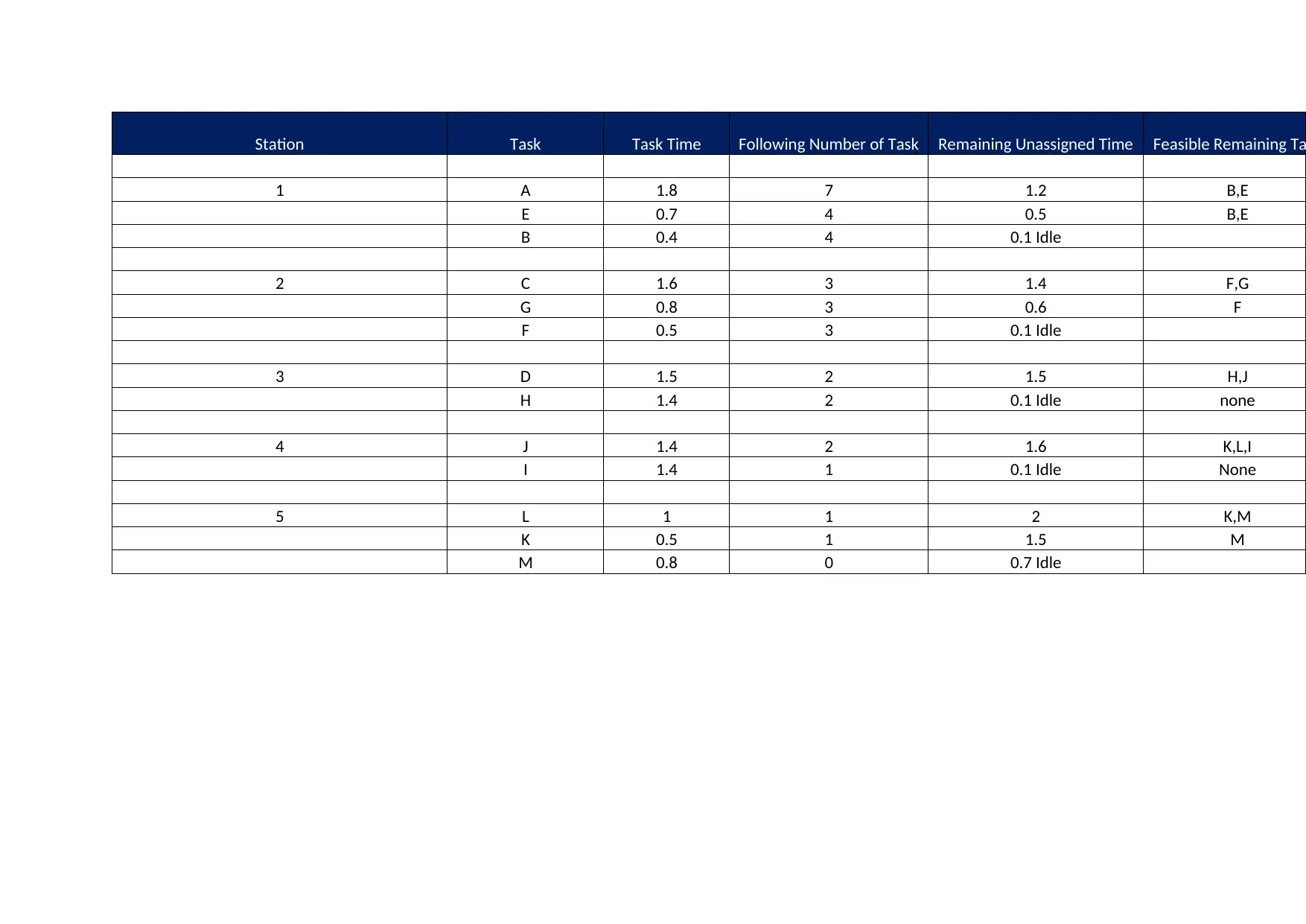






![[object Object]](/_next/static/media/star-bottom.7253800d.svg)